Although clear challenges can come with the increasing cost and frequency of global natural disasters, there could also be untapped opportunity for insurers to tackle coverage gaps, according to panelists at the Insurance Information Institute’s 2018 P/C Joint Industry Forum, held January 16 at New York City’s Marriott Marquis.
“One of the lessons coming out of 2017 is that there’s still a tremendous amount of opportunity in the insurance industry,” said Bill Churney, president of AIR Worldwide, during a panel discussion.
The cost of natural disasters has almost quadrupled over the last decade, with 2017 being the costliest year on record, according to research from the U.S. Department of Commerce’s National Oceanic and Atmospheric Administration (NOAA).
However grim it sounds, this increase in natural disaster cost could lead to untapped market share for the insurance industry, according to Kaplan, who presented research by Swiss Re during the panel discussion. Although 2017 preliminary numbers show there were approximately $300 billion in natural catastrophe losses across all perils, Kaplan added that only approximately $130 billion of that was insured.

“The other $270 billion is on the back of taxpayers and not on the balance sheets of insurance companies,” he said.
As an example, Churney pointed out that most of the risk seen in Hurricane Harvey was uninsured. Losses from Hurricane Harvey exceeded $125 billion, ranking second only to Hurricane Katrina – the costliest storm in the 38-year period of record, the NOAA reported.
“One of the things that I think the industry will have to come to grips with is this whole idea of the one-in-100-year flood zone FEMA (Federal Emergency Management Agency) map,” Churney said. “It’s not a very good proxy for the risk, given that 40-50% of the loss in Harvey was outside of those areas. So, that’s the opportunity that’s out there. How does the industry insure the exposure there?”
A tool that could assist the insurance industry in harnessing that opportunity is technology, according to Churney.
“With a lot of the risks that we’ve talked about this year – wildfires and flood in particular – the common refrain [among insurers] has always been, ‘Well, we can’t insure that. There’s not the technology to do that,'” he said. “We obviously would argue against that.”
As natural catastrophe models continue to evolve to better assess risk, and clearer aerial imagery allows companies to gather data without bothering the policyholder, the insurance gap can begin to close, Churney said.
“I think companies are pushing forward on that front,” he said. “There’s a good distance to go, but I think it’s the collection of better data about the risk coupled with the ever-improving models that will help give people more certainty to hopefully take on more of that gap.”

Kaplan added that another important aspect of closing the coverage gap is data collection and the ability to merge publicly available data with private market technical expertise.
“[That] actually changes, I believe, the value proposition our industry can have in terms of getting money in the hands of the people that need it before the disaster occurs,” he said.
According to Swiss Re’s research, 32.5% of Americans today said they couldn’t pull together at least $2,000 in the event of a disaster. With 8% of the U.S. population affected by natural disasters in 2017, this means 8.5 million people not only were affected by disasters, but also didn’t have cash on hand and likely didn’t have flood insurance, Kaplan said.
“We have to figure out as an industry how are we going to get money in the hands of the people that need it in a much faster way,” he stated. “I think technology and data are absolutely critical to that.”
Rise in Presidentially Declared Disasters
Beyond an increase in natural catastrophe costs, presidentially declared disasters have also increased in frequency. Swiss Re’s research shows that while Ronald Reagan averaged 28 presidentially declared disasters per year during his presidency, and Bill Clinton averaged 90 per year, 2011 saw 242 disasters during Barack Obama’s presidency, and the first year of Donald Trump’s presidency brought 137 presidentially declared disasters.With this in mind, panelists speculated the federal government could soon shift the burden of owning natural disaster risk to states and municipalities, giving insurers another opportunity to do more.
“If there’s any clear policy that’s coming out of Washington holistically, I would call it a reallocation of burden,” Kaplan said. “We are finally beginning to come to a point where the federal government is going to say, ‘You know what? This is not financially sustainable. We are not going to continue to provide bailouts to communities that are otherwise making bad decisions about land use, planning or building codes. You have to own your risk.’ Part of the solution is inevitably going to be insurance.”
He added that insurance as part of the solution was initially seen with the National Flood Insurance Program purchasing reinsurance in 2017, and he expects more moves like that going forward.
Churney echoed Kaplan’s thoughts.
“I think there’s an education element here that maybe the whole insurance industry could do more to say, ‘We can get you back on your feet a lot more quickly than you waiting for these incredible amounts of time only to get a payout that probably won’t help you rebuild your home and get your business back up and running,” he said. “There’s a great opportunity there.”
Panelists also predicted that U.S. states and municipalities may begin to realize the need for taking control of their own risk.
“I also suspect that there are a lot of states and municipalities in our country who are going to start realizing, ‘Wow. It’s a huge burden, and it is fairly uncertain as to whether and how and when the federal government is going to respond,'” Kaplan said.
He added as one example that it took U.S. Congress 90 days to pass the supplemental for Hurricane Sandy, but one year after the disaster, 75% of the funds had not yet been dispersed.
“So how do you plan your future? How do you plan your recovery based on that?” he said. “I would venture to say that the way better route is with insurance contracts.”
Challenges and Lessons
However, one challenge for insurers in this environment is that there can be a perception that bailouts are bigger than they are, which can discourage assuming personal responsibility for natural catastrophe risk, Kaplan stated.
“The largest check FEMA will write an individual family is $33,000,” he said. “And I think most people don’t know that. I’ve known risk managers of public entities across the United States that always say, ‘Why would I pay for something I know I’m going to get for free?’ So, there’s this perception that the federal government is going to come and save the day.”
Indeed, Julie Rochman, president and CEO at the Insurance Institute for Business & Home Safety (IBHS), told Insurance Journal that she sees a lack of incentive to own risk with the current system of “safety nets” in place.

“There are safety nets below safety nets below safety nets, so if you fall through one – the primary one, which is private insurance – you land in a federal agency’s lap,” she said. “If you fall through that, you might land in another federal agency’s lap, and if you fall below that, you might land in some sort of state safety net. If you fall below that, you’ve got Red Cross and all of the NGO’s. So we have set up this system of like nine safety nets, which allows people to say, ‘I don’t have to take any personal responsibility. I don’t have to own any of my own risk.'”
Rochman also pointed to another problem – one she said she sees as “a bit naïve.”
“People also do not believe that bad things will happen to them,” she said. “You hear it all the time after a catastrophe: ‘We never thought it would happen here or to us.'”
As insurers work to harness the challenges and opportunities the current natural disaster environment presents, Rochman said it’s important insurers send “honest market-based signals and information to people, so that they truly understand the risk they face.”
“Insurers are strong proponents of honest conversations about relative risk,” she said. “Those signals essentially tell the property owner that they have choices about the buildings in which they live and work, but they should not fool themselves about their risk of flooding, or wildfire, or earthquake, or tornadoes or hurricanes. If the home or business owner ignores the relative pricing and availability signals, that is their choice, but it’s just not a good thing.”
Kaplan said he believes learning from the events of last year is a good place to start in working toward change.“I think there are a lot of lessons in the last year,” he said. “I think it’s promising that we have so many governments around the world focusing on risk, the cost of risk and how to engage the private sector to shift more of the burden off of the back of tax payers onto the balance sheet of the private market.”
Rochman agreed, adding that she believes change is in the pipeline for 2018.
“I do believe that people’s ears and eyes are now open to the concept of mitigation, and they’re open to having a conversation that would end in not repeating the same type of losses,” she said. “You’ve got institutional investors, government agencies, academics, meteorologists and all of these people focused on resilience. Hopefully, 2018 will be the year when the switch flips, and people start seeing that mitigation is an investment; it’s not an expense. Because that’s how we will change the culture of this country so that it is one of preparedness instead of just continued response and recovery.”
*Elizabeth Blosfield is the East Region Editor for our sister Wells Media publication Insurance Journal.



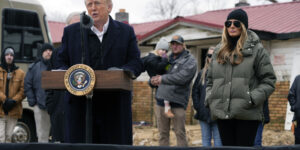

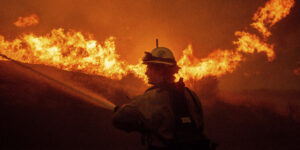


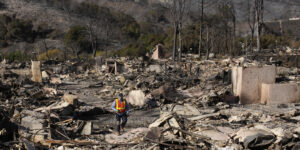
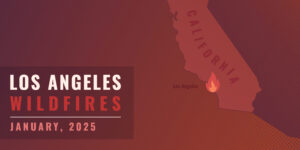











 Leading Insurance Innovation in the AI Age (Part 2: Tech Project Pitfalls)
Leading Insurance Innovation in the AI Age (Part 2: Tech Project Pitfalls)  California Wildfires Could Spark Insurance Moratoriums, Other Challenges
California Wildfires Could Spark Insurance Moratoriums, Other Challenges 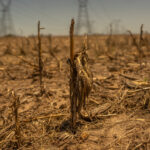 Damaging Megadroughts Are Spreading Around the World
Damaging Megadroughts Are Spreading Around the World  California Years Behind in Implementing Defensible Space Law
California Years Behind in Implementing Defensible Space Law 






